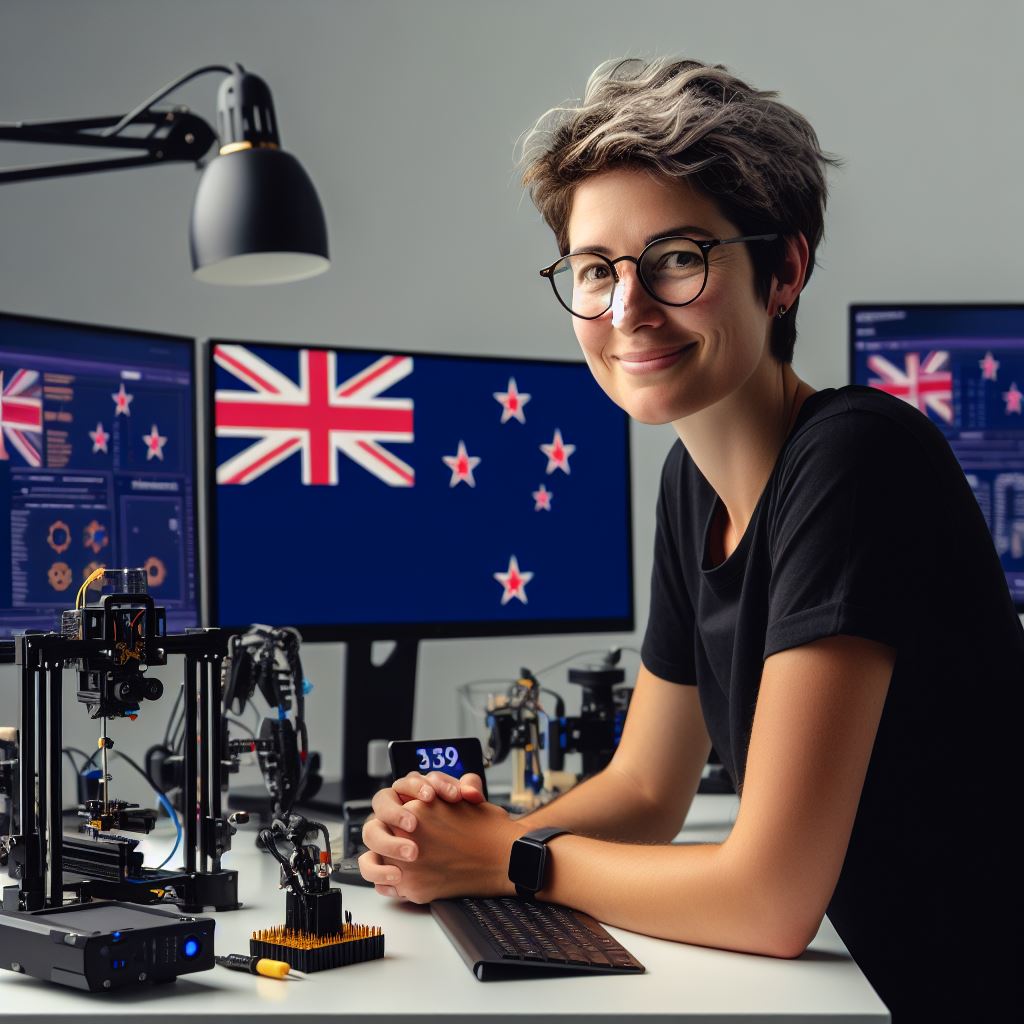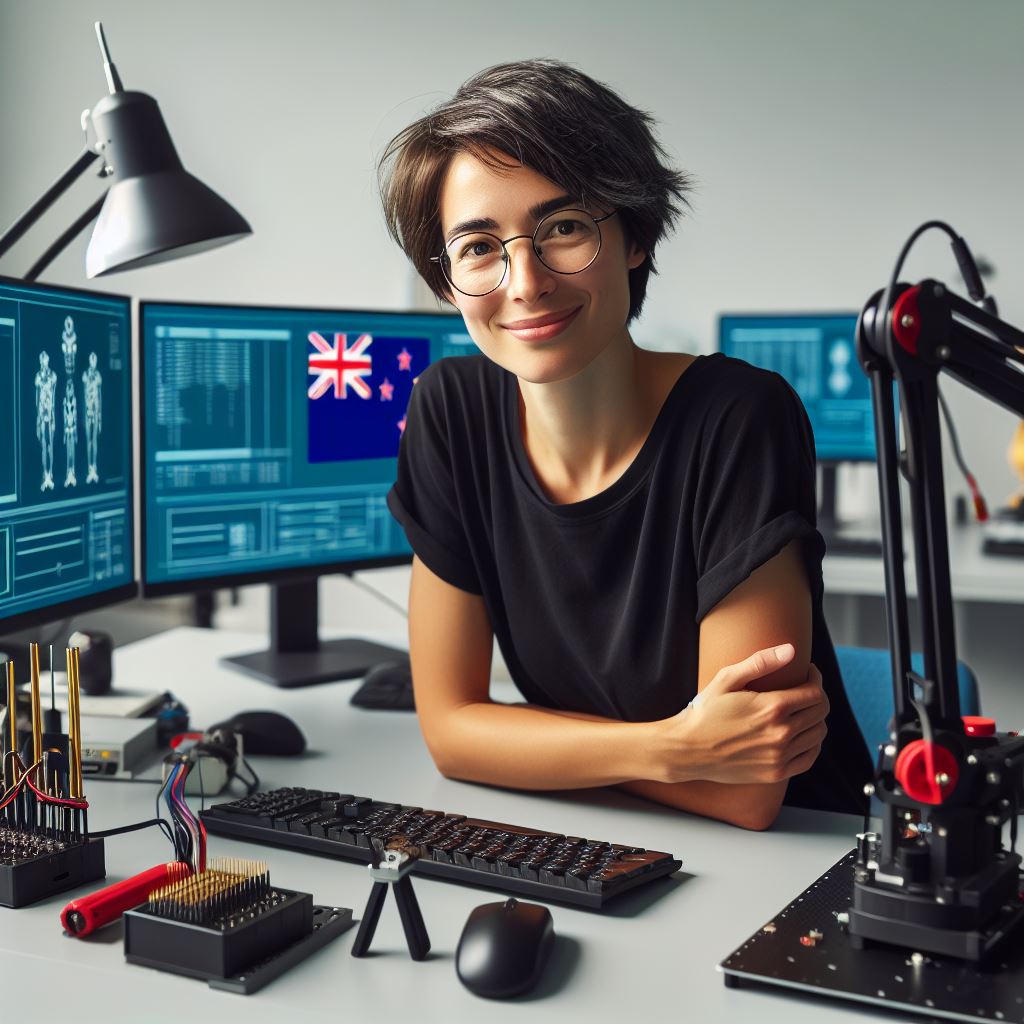Introduction
Technology and creativity are two fundamental aspects of engineering that need to be balanced in order to achieve extraordinary results.
In New Zealand, where engineering plays a vital role in various industries ranging from infrastructure development to renewable energy, striking the right balance between these two elements is crucial for success.
While technology brings precision and efficiency to engineering projects, creativity fuels innovation and pushes boundaries.
It is the creative thinking that allows engineers to develop groundbreaking solutions and overcome complex challenges.
However, relying solely on technology can lead to a stagnation of ideas and restrict the potential for innovation.
Finding a balance between technology and creativity is important because it allows engineers to harness the power of technology while nurturing their creative thinking abilities.
By integrating technological advancements into their creative process, engineers can create innovative designs that are not only efficient but also aesthetically pleasing.
This balance ensures that engineering projects not only meet functional requirements but also have a unique touch that sets them apart.
Moreover, balancing tech and creativity in NZ engineering is essential for staying competitive in the global market.
As technology advances at a rapid pace, engineers need to continuously evolve and adapt their creative thinking to effectively utilize these advancements.
This balance enables engineers in New Zealand to compete with global counterparts and contribute to the advancement of the engineering field on an international scale.
In review, the importance of balancing technology and creativity in NZ engineering cannot be overstated.
It is this delicate equilibrium that drives innovation, fosters creative problem-solving, and enables engineers to make significant contributions to society.
In the following sections, we will delve deeper into the specific ways in which a balance can be achieved, highlighting real-life examples and success stories from the field of engineering in New Zealand.
The Role of Technology in NZ Engineering
Advancements in Technology in the Engineering Industry in NZ
- Technology has revolutionized the engineering industry in NZ, leading to significant advancements.
- The introduction of computer-aided design (CAD) has transformed the way engineers design and create products.
- Automation and robotics have increased productivity and efficiency in engineering processes.
- Advanced materials, such as carbon fiber, have revolutionized the construction of structures and machinery.
- 3D printing technology has enabled rapid prototyping and reduced the time and cost of product development.
- The use of drones and satellite imagery has improved surveying and mapping capabilities.
- Virtual reality (VR) and augmented reality (AR) technologies have revolutionized training and simulation in engineering.
Benefits of Incorporating Technology in Engineering Processes
- Technology enables engineers to design and analyze complex systems more accurately and efficiently.
- Automation reduces human error and increases the precision and consistency of engineering processes.
- 3D modeling and simulation allow engineers to test designs and identify potential flaws before production.
- Incorporating technology improves safety in hazardous engineering environments by replacing manual labor with automated systems.
- Technology enables real-time monitoring and data collection, allowing engineers to make informed decisions.
- The use of advanced materials and manufacturing techniques improves the durability and functionality of engineered products.
- The integration of technology in engineering processes leads to faster project completion and reduced costs.
Challenges of Over-Reliance on Technology in Engineering
- The over-reliance on technology can lead to a loss of crucial engineering skills and expertise.
- Malfunctions or technical failures can disrupt operations and lead to costly downtime.
- The complexity of advanced technologies may require specialized knowledge and training for engineers to use them effectively.
- Cybersecurity threats pose a significant risk as more engineering processes become connected to the internet.
- The rapid pace of technological advancements requires engineers to continuously upgrade their skills and knowledge.
- Over-reliance on technology may lead to a reduction in human interaction and collaboration in the engineering field.
- Cultivating a balance between technology and creativity is essential to avoid stifling innovative thinking.
In fact, technology has brought about tremendous advancements in the engineering industry in NZ.
It has improved efficiency, precision, and safety in engineering processes, leading to faster project completion and reduced costs.
However, it is crucial to be aware of the potential challenges that arise from over-reliance on technology, such as the loss of essential skills, technical failures, and cybersecurity risks.
Striking a balance between technology and creativity is vital to ensure continued innovation in the engineering field.
Read: The Future of Electrical Engineering in NZ
The Importance of Creativity in NZ Engineering
The Role of Creativity in Problem-Solving and Innovation in Engineering
Creativity plays a crucial role in problem-solving and innovation within the field of engineering.
Engineers are faced with complex challenges that require them to think outside the box.
They need to come up with unique and innovative solutions to address these challenges effectively.
By harnessing their creative thinking skills, engineers are able to identify new perspectives and approaches that others might not have considered.
This enables them to develop groundbreaking solutions that push the boundaries of what is possible in engineering.
Creativity is particularly important in problem-solving because it allows engineers to approach challenges from different angles.
Instead of relying on conventional methods, they can explore unconventional ideas and potential solutions.
This mindset of thinking beyond the norm often leads to breakthroughs in engineering.
For example, in designing a new bridge, engineers might use creative thinking to develop innovative materials or construction techniques that improve structural integrity while reducing costs.
Moreover, creativity fuels innovation within the engineering field.
Innovation is necessary to adapt to changing technologies and societal needs.
By embracing their creative abilities, engineers can drive advancements and develop new technologies that shape the future.
Innovation opens doors to endless possibilities and ensures that engineering continues to evolve and meet the demands of a constantly changing world.
Creativity Enhances Engineering Processes and Outcomes
Creativity enhances engineering processes by fostering collaboration and promoting a multidisciplinary approach.
Engineers often work in teams, and by encouraging creative thinking, they can leverage diverse perspectives and expertise.
This leads to more comprehensive problem-solving and results in more robust engineering solutions.
When individuals with different backgrounds and skill sets contribute their unique creative ideas, the collective creativity strengthens the engineering process.
Moreover, creativity enhances the outcomes of engineering projects by enabling engineers to develop inventive and efficient solutions.
Through creative thinking, engineers can identify opportunities for optimization, streamlining processes, and reducing resources.
This leads to cost-effective and sustainable engineering solutions that benefit both the project and the environment.
For example, in the construction of sustainable buildings, creative engineering designs can maximize energy efficiency and minimize environmental impacts.
Creativity also plays a significant role in improving the user experience of engineering projects.
By considering the end-users and their needs, engineers can develop innovative designs and solutions that enhance usability and user satisfaction.
This user-centered approach, driven by creativity, ensures that engineering solutions not only meet technical requirements but also provide additional value to the end-users.
How Creative Solutions Have Contributed to Engineering Projects in NZ
New Zealand has witnessed the power of creative solutions in several engineering projects.
One noteworthy example is the Te Rewa Rewa Bridge in New Plymouth.
This iconic bridge, inspired by a breaking wave, showcases the creative genius of the engineers involved.
Its unique design not only provides a functional crossing for pedestrians and cyclists but also adds aesthetic beauty to the landscape.
Another example is the Project Mokihinui on the West Coast of New Zealand.
To preserve the pristine environment and wildlife, engineers came up with a creative and innovative design solution.
Instead of building a traditional dam, a run-of-river hydroelectric power scheme was implemented, minimizing the environmental impact while still generating renewable energy.
These examples demonstrate how creative solutions have contributed to engineering projects in New Zealand.
By combining technical expertise with imaginative thinking, engineers in NZ have successfully tackled complex challenges, leaving a lasting impact on infrastructure, sustainability, and user experience.
To sum it up, creativity is of paramount importance in NZ engineering.
It enables engineers to break free from traditional approaches and develop innovative solutions.
Creativity enhances the problem-solving process, drives innovation, and leads to better engineering outcomes.
By highlighting the significance of creativity, NZ engineering can continue to flourish and contribute to a sustainable and technologically advanced future.
Read: NZ Electrical Engineering: Industry Insights
Striking a Balance: Challenges and Solutions
Challenges Faced in Balancing Technology and Creativity in Engineering
- Limited Time and Resources: Engineers often face time constraints and limited resources that can hinder their ability to be creative.
- Fear of Failure: The pressure to produce successful outcomes can discourage engineers from taking risks and exploring innovative solutions.
- Focus on Practicality: Engineering often emphasizes practical design solutions, leaving little room for creative and unconventional approaches.
- Lack of Collaboration: Isolation can stifle creativity, and engineers working in silos may struggle to integrate technology and creativity effectively.
Impacts of an Imbalance between Tech and Creativity
- Lack of Innovation: Without a balance between technology and creativity, engineers may fail to develop innovative and groundbreaking solutions.
- Inefficient Designs: Overemphasis on technology can lead to overcomplicated designs that are not user-friendly or efficient.
- Detriment to User Experience: Neglecting creativity can result in products or systems that lack a human-centered and intuitive approach.
- Decreased Job Satisfaction: Engineers who feel limited in expressing their creativity may experience decreased job satisfaction and burnout.
Strategies and Approaches to Help Engineers Strike a Balance between the Two
- Emphasize Cross-disciplinary Collaboration: Encourage engineers to work with professionals from different fields to foster a holistic and creative design approach.
- Foster a Supportive Environment: Create an organizational culture that values and rewards creativity, allowing engineers to explore innovative ideas.
- Provide Training and Development Opportunities: Offer workshops and training sessions to enhance engineers’ creative thinking skills and problem-solving abilities.
- Encourage Continuous Learning: Engineers should stay updated on emerging technologies, while also cultivating their creative skills through continuous learning and self-improvement.
- Incorporate Design Thinking: Integrate design thinking methodologies into engineering processes to promote empathy, user-centricity, and creative problem-solving.
- Allow for Iterative Design: Engineers should have the flexibility to iterate and refine their designs, allowing for experimentation and creative exploration.
- Balance Practicality and Creativity: Encourage engineers to find a middle ground between practicality and creativity, considering both technical feasibility and innovative design aspects.
- Encourage Risk-taking: Foster a culture that supports calculated risk-taking, giving engineers the confidence to explore unconventional ideas without fear of failure.
- Seek Inspiration from Different Industries: Encourage engineers to explore ideas and solutions from other industries to spark creativity and novel approaches.
- Encourage Work-Life Balance: Promote work-life balance to prevent burnout and ensure that engineers have the mental space and energy for creative thinking.
By recognizing and addressing the challenges, engineers can strike a balance between technology and creativity in their work.
This balance will not only lead to innovative and effective solutions but also foster a sense of fulfillment and satisfaction in their careers.
Read: How to Become an Electrical Engineer in NZ

Case Studies: Successful Examples of Balancing Tech and Creativity in NZ Engineering
Engineering Projects in NZ that Effectively Balanced Technology and Creativity
- The Auckland Harbour Bridge: The iconic bridge showcases a balance between innovative engineering design and aesthetic appeal.
- The Sky Tower: This engineering marvel combines advanced structural engineering with an innovative architectural design.
- The Te Papa Museum: This project successfully merged cutting-edge technology with creative exhibition spaces.
- The Christchurch Rebuild: Engineers incorporated modern techniques while preserving the city’s cultural heritage.
- The Meridian Energy Wind Farms: These projects showcase the integration of renewable energy technology with environmental consciousness.
Outcomes and Benefits Achieved in these Case Studies
- The success of these projects led to increased tourism, economic growth, and national pride.
- They demonstrated the ability to attract international attention and recognition for NZ engineering expertise.
- Efficient and sustainable engineering solutions were achieved, contributing to a greener future.
- Enhanced public spaces and improved infrastructure positively impacted the quality of life for residents.
- Creative designs influenced architectural trends and inspired future engineering projects.
Factors that Contributed to the Successful Integration of Tech and Creativity in these Projects
- Collaboration between engineers, architects, and designers allowed for the seamless integration of technology and creativity.
- The use of advanced software and modeling tools enabled precise planning and visualization of the projects.
- Effective project management strategies ensured coordination between different disciplines and timely execution.
- Public involvement and feedback were taken into consideration to ensure projects aligned with community needs and aspirations.
- Investment in research and development fostered innovation and encouraged the exploration of new engineering possibilities.
These case studies showcase how technology and creativity merge successfully in New Zealand engineering projects.
The Auckland Harbour Bridge combines structural integrity and visual appeal.
The Sky Tower demonstrates technology supporting creative architectural design.
Te Papa Museum integrates advanced technology with creatively curated exhibition spaces.
The Christchurch Rebuild preserves landmarks with resilient materials and earthquake-resistant designs.
Meridian Energy Wind Farms exhibit high-tech wind turbine technology blending with the natural landscape.
Personalized Career Consulting
Unlock your potential with expert career advice tailored to your goals. Get personalized guidance and actionable steps toward your dream career in New Zealand.
Get StartedThey result in increased tourism, economic growth, and international recognition for New Zealand.
These projects also contribute to a sustainable future by reducing reliance on fossil fuels.
Improved public spaces and infrastructure positively impact locals’ and visitors’ quality of life.
Factors such as collaboration, technology utilization, effective management, public involvement, and research investment contribute to success.
In short, these case studies illustrate New Zealand’s prowess in balancing technology and creativity in engineering.
Read: Essential Skills for NZ’s Electrical Engineers
The Future Outlook: Nurturing Tech and Creativity in NZ Engineering
The Growing Demand for Engineers who can Effectively Balance Technology and Creativity
- In today’s rapidly advancing technological landscape, there is a growing demand for engineers who can effectively balance technology and creativity.
- Employers are seeking engineers who not only possess strong technical skills but also possess the ability to think outside the box and come up with innovative solutions.
- The ability to combine technical knowledge with creative thinking allows engineers to tackle complex problems and drive innovation in various industries.
- Engineers who can effectively balance the use of technology with creative problem-solving skills are highly sought after in the job market.
The Importance of Fostering Both Tech and Creativity Skills in Engineering Education
- Engineering education plays a crucial role in fostering both technological and creative skills among future engineers.
- By integrating technology and creativity into the curriculum, educational institutions can prepare students to meet the demands of the future.
- Technological skills provide a solid foundation for engineering, but creativity is what sets exceptional engineers apart.
- Creativity allows engineers to think critically, explore alternative solutions, and approach problems from different angles.
- Engineering education should encourage collaboration, experimentation, and the development of creative problem-solving techniques.
- By fostering both tech and creativity skills, engineering programs can produce well-rounded graduates who are equipped to thrive in the industry.
The Development of Tech and Creativity in NZ Engineering
- Individuals and organizations can support the development of tech and creativity in NZ engineering in several ways.
- Encourage interdisciplinary collaborations between engineers and professionals from other creative fields.
- Foster a culture of innovation and creativity within engineering organizations to encourage employees to think outside the box.
- Provide resources and opportunities for engineers to further develop their creative skills, such as workshops and training programs.
- Emphasize the importance of lifelong learning and continuous professional development to stay updated with the latest technological advancements.
- Support initiatives that promote diversity and inclusion in the engineering field, as diverse perspectives foster creativity and innovation.
In a nutshell, the future of NZ engineering lies in nurturing the balance between technology and creativity.
The growing demand for engineers who possess both tech and creative skills highlights the importance of fostering these skills in engineering education.
Individuals and organizations can contribute to this development by encouraging interdisciplinary collaborations, fostering a culture of innovation, and providing resources for continuous learning.
By doing so, we can ensure that NZ engineering remains at the forefront of technological advancements while embracing the power of creativity to drive innovation.
Conclusion
Recap
Throughout this blog post, we explored the concept of balancing technology and creativity in the field of engineering in New Zealand.
We discussed how the rise of technology has greatly impacted the industry, making it essential for engineers to embrace new advancements and stay up-to-date with the latest tools and techniques.
However, we also recognized the significance of creativity in engineering.
We explored how it fuels innovation, allowing engineers to come up with unique solutions to complex problems.
This creativity is what sets engineers apart and drives progress in the industry.
Reinforce
Finding a balance between technology and creativity is crucial in the field of engineering in New Zealand.
It enables engineers to leverage the power of technology while harnessing their imaginative and innovative potential.
By embracing both aspects, engineers can push boundaries, develop groundbreaking solutions, and contribute to the growth and development of New Zealand’s engineering sector.
Final Thought
As we move forward, let us remember that the fusion of technology and creativity is not a trade-off but a powerful partnership.
It is this blend that will drive engineering excellence in New Zealand, shaping a brighter future for us all.
Whether you’re an engineer, a student, or someone interested in the field, let’s continue to foster this balance and drive innovation in engineering for the benefit of our society.




